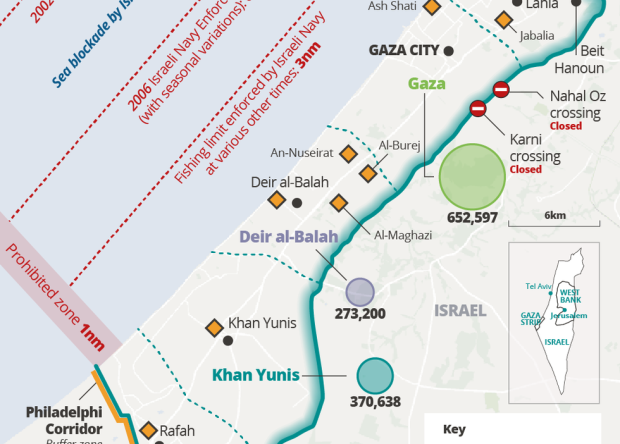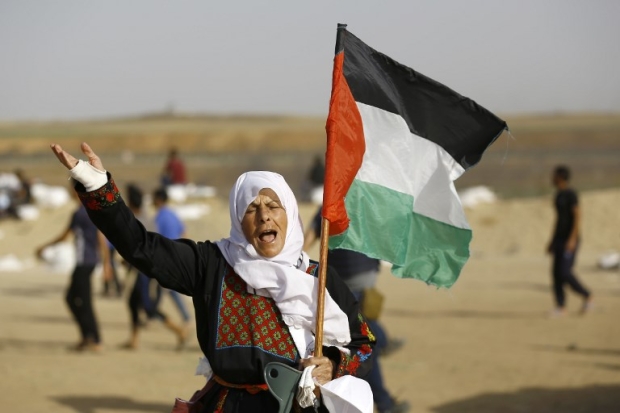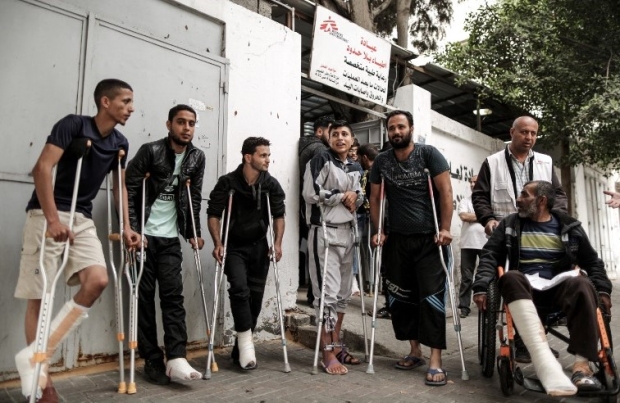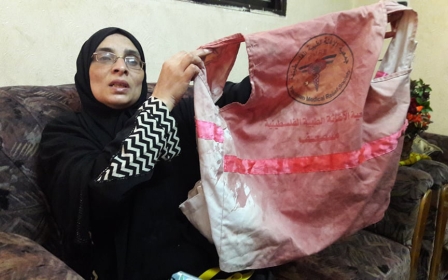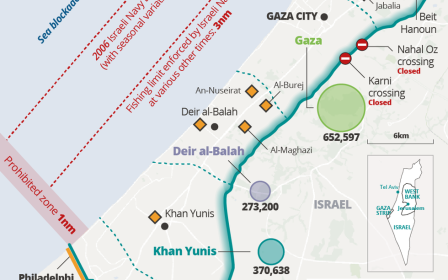Ismael Haniyyah: Lift the siege on Gaza immediately and unconditionally
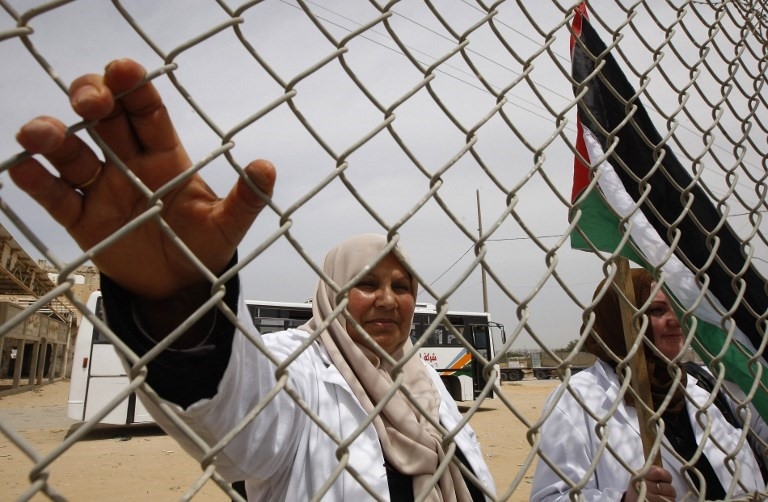
No cause, at the global level, is clearer and fairer than the cause of Palestine. This is a people whose land was occupied more than seven decades ago and who were subjected to a methodological process of ethnic cleansing as has been documented by many international reports and even by studies conducted by Israeli historians.
Gaza: special status
In 1948, around 700,000 Palestinians were forcibly removed from their homes and lands. Hundreds of Arab towns and villages were destroyed. Regrettably, all of this happened while the international community heard and watched and often even colluded. Several UN resolutions were issued after the Palestinian Nakba in 1948 and the establishment of the state of Israel.
Their purpose was to serve justice to the Palestinian people. Foremost among them was UN General Assembly resolution 194 in December of that same year granting the Palestinians the right to return to the homes they were banished from.
Throughout the past seven decades, Gaza has occupied a special status compared with other Palestinians regions
The Palestinians waited for seven decades, during which they suffered considerable injustice, deprivation and homelessness while still hoping that one day they would be able to gain their basic rights to freedom, independence and return. During that period, the Palestinians sacrificed a lot and sought all avenues to regain their basic rights, but to no avail.
In fact, their conditions have continued to deteriorate day after day and the international community has done nothing to do them justice or adopt the measures needed to prevent the Israeli occupation from perpetrating more crimes against them. The United Nations has failed to implement any of its own Palestine resolutions, which were adopted with an overwhelming majority.
Throughout the past seven decades, Gaza has occupied a special status compared with other Palestinians regions, and for several reasons.
The image of Palestinian suffering
The Gaza Strip is a narrow coastal enclave with an area that does not exceed 360 square kilometres with a population of around two million, 70 percent of whom happen to be refugees. In this sense, the strip is the most densely populated area in the world. For political, geographic and societal reasons, the strip has always been the most distinguishable image of Palestinian suffering.
Apart from the occupation that continued since 1967, the strip has been subjected to an oppressive and illegal siege for more than 12 years, turning it into the biggest open prison in the world, as described by former UK prime minister Gordon Brown.Such collective punishment of the Palestinians in the Gaza Strip, as described by Amnesty International in its reports, led to the creation of a deep and chronic humanitarian crisis to the extent that the United Nations predicted, according to its own detailed studies, that Gaza would in 2020 become uninhabitable.
The humanitarian crisis has penetrated into all aspects of life. We are talking here about a poverty rate of 80 percent, about an unemployment rate of 50 percent, about that fact that 95 percent of the water is undrinkable, about electricity supply for no more than three to four hours per day, about border passages denied to the overwhelming majority of the population and profound psychological problems that affect the majority of the population and particularly the children.
For political, geographic and societal reasons, the strip has always been the most distinguishable image of Palestinian suffering
The humanitarian crisis in the strip has been augmented by three major wars waged against it in recent years, leading to the death and maiming of thousands of Palestinians and the destruction of thousands of houses as well as the destruction of an already fragile infrastructure.
Regrettably, Israel and its leadership have been able to get away with all of this. Despite all the UN resolutions, they have been encouraged to continue their aggression against our people.
All of this has made life in the Gaza Strip unbearable. It is as if the Palestinians are being punished for making a free democratic choice in the free and fair elections that were held in 2006 as testified and observed by many European institutions and political parties.
The right of return march
In the shade of such complex circumstances, the Palestinians, with all their political and societal constituents, including the Islamic Resistance Movement Hamas, decided on Land Day this year, which fell on 30 March, to organise peaceful marches toward the border fence to the east of the Gaza Strip.
As such, the US administration has defied the global Muslim community by transgressing against one of Islam’s most important and sacred places. The recent move turns the United States into a partner in the aggression committed against the Palestinians.
The US administration has defied the global Muslim community by transgressing against one of Islam’s most important and sacred places
The third objective is to send a loud message to the world that Gaza will not succumb to a slow death, and to demand an immediate and unconditional end to the siege. For weeks, tens of thousands of Palestinians - men and women, old and young, and from all political trends - answered the call.
According to international law, the Gaza Strip is still an occupied territory. Israel has full control over the land, the sea and the air, and from all directions. As an occupying power, Israel is fully responsible for the lives of the civilians in Gaza and is responsible for meeting their needs.
The international community is hereby demanded to exercise pressure and take the necessary measures to force Israel to lift the siege immediately and unconditionally before the humanitarian crisis escalates to the level of an explosion whose repercussions are likely to be rather risky for all parties concerned.
A Palestinian state
The Palestinians in general have given all they were asked to give during the past decades for stability in the region to be maintained. Yet, the outcome has been more Israeli obstinacy, the destruction of every opportunity to resolve the conflict, more land theft so as to build settlements and turn Jerusalem into an exclusively Jewish city, the detention of thousands of our people, and an oppressive siege imposed on Gaza.
As for Hamas, in its capacity as a national Palestinian liberation movement, it has repeatedly exhibited a high level of flexibility and made proposals and adopted policies that could have helped achieve calm and stability and avoid further escalation.
This is in regard to the conflict with the Israeli occupation. At the domestic level, and to surpass the state of harmful division, Hamas has repeatedly called for free and fair elections to be conducted at all levels and in all places where the Palestinians exist, to end the autocracy with which Palestinian affairs are conducted, and to give the Palestinian people the chance to choose their own leadership and the political programme they deem appropriate for the accomplishment of their objectives.
Israeli propaganda
Although, as a Palestinian people, we have taken a united national decision to demonstrate peacefully against the occupation and against the siege, Israeli propaganda, with the support of some major international media outlets, talks about "Palestinian violence".
How could any sane person believe such ludicrous propaganda at a time when official statistics state that around 15,000 Palestinians have been wounded, some with serious injuries, 20 percent of whom happen to be children, and more than 120 Palestinians have been killed, including many children, while not a single injury was recorded on the opposite side of the fence.
Even journalists and paramedics have not been spared, including most recently 21-year-old Razan al-Najjar while rushing to save wounded Palestinians. Very regrettably, some international powers, foremost among them the United States, insist on supporting the oppressor against the victims, and to stand by injustice at the expense of justice.
Some people talk about the risk of infiltrating the borders and about the right of the occupation to self-defence. It should be known that these are not internationally recognised borders. Even the occupation authorities describe this as a separation security fence and not as a border, thus reflecting their lust for more expansion and aggression.
Even the armistice line agreed on in 1949 entitles the Gaza Strip to an area of more than 200 square kilometres in the east and in the north. All this was seized by the occupation through thuggery and aggression, just as it is doing today in our lands, stealing them so as to expand its illegitimate settlements.
On this occasion, we would like to salute all the free voices, especially in the West, that have stood by our people in their tribulation, and the sincere efforts, whether by demonstrating on the streets or by issuing protest statements or by publishing other media materials to confirm the peacefulness of our marches and refute the allegations made by Israeli propaganda.
We would also like to commend the recent UN Human Rights Council resolution on 18 May 2018 during the special session that discussed the deterioration of the human rights situation in the occupied Palestinian territories and its call for the formation of an independent international investigation committee to look into the grave human rights violations perpetrated against the Great Return March.
We have the right to see a fair investigation into what happened, and see the criminals, the occupation soldiers and commanders, being prosecuted before international tribunals, so as for the rule of law to prevail and for justice to be upheld. Otherwise, Israel will continue to act with impunity, and as a result the law of the jungle will prevail.
Our legitimate rights
We shall continue our peaceful popular marches to demand our legitimate rights, foremost among them a dignified living. The first step towards achieving this would be to lift the siege on Gaza immediately and unconditionally so as to give the new generation a chance to see light at the end of the dark tunnel instead of being driven, by virtue of the miserable conditions, towards desperation, frustration and extremism.
We shall continue to knock on the doors of this huge prison, and we shall eventually bring down its walls.
We are a people who love life and desire to see stability and prosperity. We wish everyone the best. Making death and war is not our hobby. Every person we lose along the way is dear to us and the loss is painful. So, if we are able to gain our right to freedom, independence and honourable living peacefully, this would be our best option.
But if we are not enabled to do so, then it is our right to resist occupation through all possible means, including armed resistance, a right that is legitimate and guaranteed by international law.
Our people still long for a better future in which the siege will be lifted and the occupation ended, when we build our independent state with Jerusalem as its capital and when we actively participate in serving the best interests of humanity.
- Ismael Haniyyah is political bureau head of the Islamic Resistance Movement (Hamas)
The views expressed in this article belong to the author and do not necessarily reflect the editorial policy of Middle East Eye.
Middle East Eye propose une couverture et une analyse indépendantes et incomparables du Moyen-Orient, de l’Afrique du Nord et d’autres régions du monde. Pour en savoir plus sur la reprise de ce contenu et les frais qui s’appliquent, veuillez remplir ce formulaire [en anglais]. Pour en savoir plus sur MEE, cliquez ici [en anglais].



